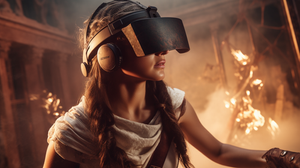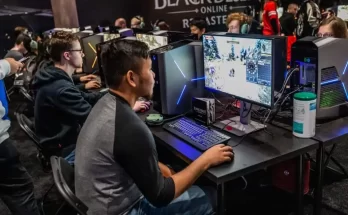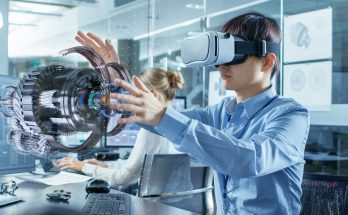Virtual Reality (VR) has emerged as a revolutionary technology that has the potential to reshape various industries, including historical reenactments. By digitally recreating historical events and environments, VR provides a unique opportunity for people to immerse themselves in the past. This article will delve into the role of VR in historical reenactments, exploring its benefits, limitations, and the potential for preserving and experiencing history like never before.
The Power of Immersion
One of the key advantages of virtual reality for historical reenactments is its ability to create a sense of immersion. Unlike traditional reenactments, which often rely on static displays and scripted performances, VR transports users back in time by recreating historical landscapes and events with remarkable detail.
Through the use of specialized headsets, VR allows participants to physically move around and interact with their surroundings, adding a new layer of realism and authenticity. Whether it’s exploring the trenches of World War I or witnessing the signing of the Declaration of Independence, VR enables users to feel as though they are truly experiencing history.
Enhancing Educational Experiences
Virtual reality has significant implications for the field of education, and historical reenactments are no exception. Incorporating VR technology into classrooms can transform the way students learn about history. Instead of relying solely on textbooks and lectures, students can actively engage with historical events, making learning more interactive and memorable.
VR allows educators to create dynamic and engaging lessons by taking students on virtual field trips to various historical sites and events. This not only enhances their understanding of the past but also provides them with a deeper appreciation for the significance of those events and the people involved.
Preserving Lost Worlds
Historical reenactments often face limitations due to the scarcity of well-preserved sites and artifacts. However, virtual reality opens up new possibilities for preserving and experiencing lost worlds. By digitally reconstructing historical sites, VR enables us to explore and learn about ancient civilizations that no longer exist.
Moreover, the use of VR in historical reenactments can help bridge the gap between past and present. It allows us to understand the context and significance of various events by visualizing historical landscapes and environments that have undergone significant changes over time. This preservation aspect of VR ensures that future generations can continue to learn and appreciate the past even when physical remnants are no longer available.
Limitations and Challenges
While virtual reality has immense potential, there are still challenges to overcome in utilizing it for historical reenactments. The cost of VR equipment and software development can be a significant barrier for widespread adoption. Additionally, creating accurate historical reconstructions requires extensive research and collaboration with historians and archaeologists.
Technological limitations, such as the fidelity of graphics and limitations in haptic feedback, also present challenges in fully recreating historical events. VR experiences may not fully replicate the physical sensations and nuances of the past, which can impact the authenticity of the reenactments.
The Future of VR in Historical Reenactments
Despite the challenges, the future of VR in historical reenactments looks promising. As technology continues to advance, VR experiences will become more immersive and realistic, further enhancing historical accuracy. Collaboration between historians, archaeologists, and developers will be crucial in ensuring the utmost authenticity.
Widespread adoption of VR in classrooms and museums can create a new era of historical education, engaging learners in ways that were previously unimaginable. As the cost of VR technology decreases, it has the potential to become a widely accessible tool for historical reenactments, allowing people from all walks of life to experience history firsthand.
Conclusion
Virtual reality has opened up endless possibilities in the realm of historical reenactments. By providing immersive experiences, enhancing education, and preserving lost worlds, VR allows us to delve deeper into the past than ever before. Although challenges exist, the future of VR in historical reenactments looks promising, offering a new and exciting way to understand and appreciate history.



